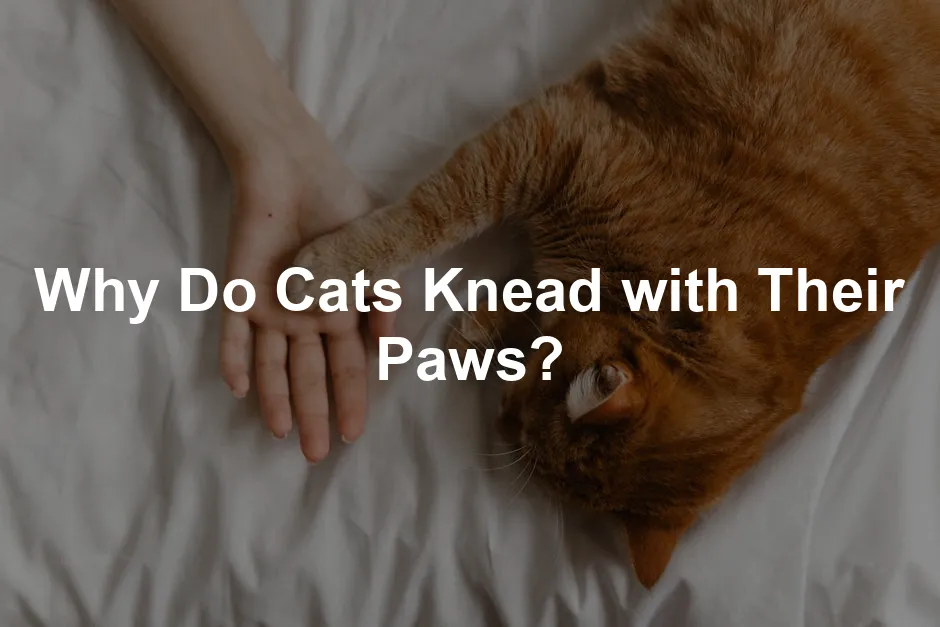
Why Do Cats Knead with Their Paws?
Introduction
Have you ever caught your cat in a moment of pure bliss, rhythmically pushing their paws into a soft surface? This adorable behavior, often called “making biscuits,” is more than just a cute quirk. It holds significant meaning regarding your cat’s emotional state and instinctual habits. Kneading often signifies comfort, affection, and security, mirroring behaviors from kittenhood. As we scratch the surface of this endearing habit, we’ll explore the reasons behind kneading in both kittens and adult cats. Understanding this behavior can deepen your bond with your furry friend and provide insight into their inner world.
Speaking of comfort, does your feline friend have a cozy spot to curl up? Consider getting a Cat Bed that provides the ultimate relaxation experience. After all, a happy cat is a kneading cat!
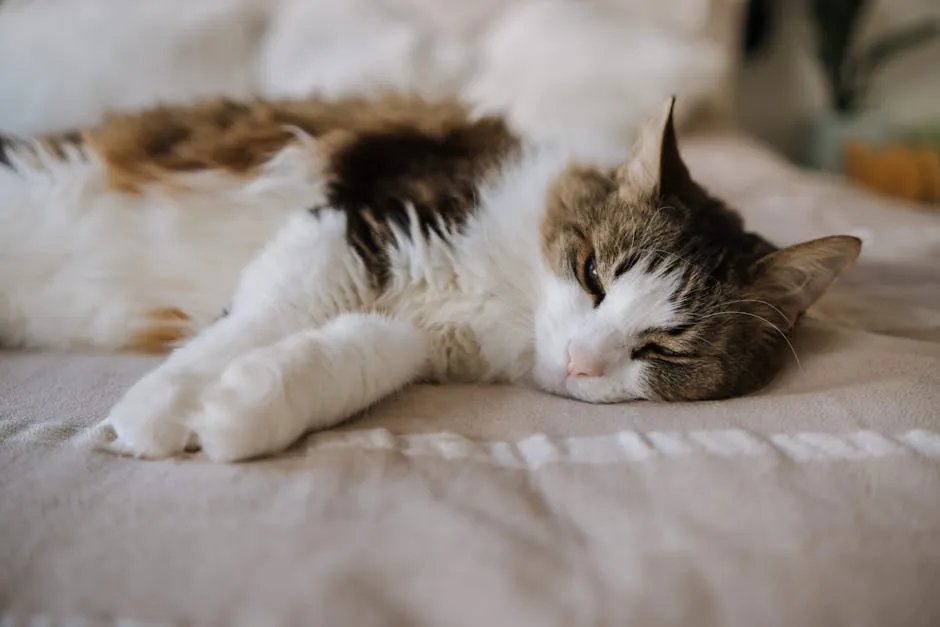
Understanding Cat Kneading
Kneading is the process where cats rhythmically alternate pressing their paws against soft surfaces. Think of it as a cat’s way of creating the perfect nest, reminiscent of kneading dough. This behavior is commonly seen when cats are content, often accompanied by purring or even drooling. Cat kneading is not just an instinct; it also enhances the emotional connection with their humans. When your feline friend kneads on your lap or a cozy blanket, they communicate their happiness and trust. Recognizing this behavior can deepen your understanding of your cat’s needs and feelings, making your companionship even more rewarding.
Now, if your cat’s kneading leaves you with a bit of a furry mess, you might want to check out a Pet Hair Remover Roller. It’s an easy way to keep your clothes and furniture fur-free while your cat enjoys their kneading sessions!
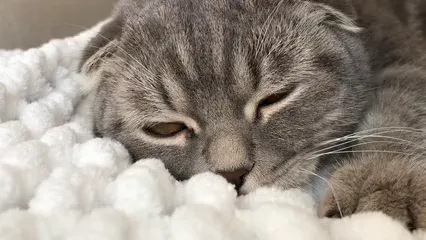
The Origins of Kneading
Kneading is an instinctual behavior that begins in kittenhood. Newborn kittens knead their mother’s abdomen to stimulate milk flow, creating a strong emotional connection during nursing. This motion not only helps them get their essential nutrients but also provides comfort and security. Veterinarians and animal behaviorists agree that this behavior persists into adulthood, as it evokes positive associations from those early days. The act of kneading can be linked to neoteny—retaining juvenile traits into adulthood—making it a charming remnant of cat evolution. Adult cats may knead on soft surfaces, including their owners, as a way to express contentment, affection, and trust. Kneading serves multiple purposes: it helps cats stretch their muscles, marks their territory with scent glands in their paws, and can even signal their emotional state. So, when your cat kneads away, they’re not just being adorable; they’re expressing a deep-seated instinct and a bond that has lasted since kittenhood.
To help them embrace their inner kneader, a Cat Scratching Post can provide a dedicated space for your kitty to stretch and knead while keeping your furniture safe from those little claws!
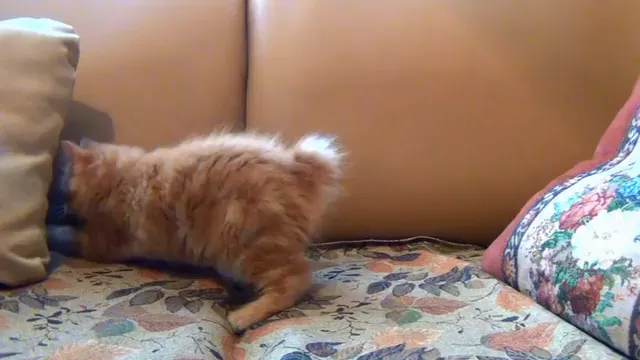
Kneading in Kittens
Kittens are the original kneaders, and they start this adorable behavior early on. When they nurse, they push their tiny paws against their mother’s belly. This action helps stimulate milk flow, ensuring they get the nutrition they need. Picture a kitten, blissfully kneading away, purring softly as they feast. This rhythmic motion is comforting, creating a bond between mother and kitten.
As kittens grow, kneading remains a cherished behavior. It fosters an emotional connection, a sense of security that they carry into adulthood. This connection is significant; it shapes how adult cats express affection. When your grown cat kneads your lap, it’s a throwback to those cozy nursing days. They still associate that motion with love and comfort. So, when you witness this endearing act, remember it’s not just a cute quirk—it’s a display of trust and familiarity rooted in their kittenhood.

Kneading in Adult Cats
Many adult cats retain the delightful habit of kneading. It’s a behavior that signifies contentment and security. You might notice your feline friend kneading when they’re nestled up on your lap or preparing for a cozy nap. It’s their way of saying, “I feel safe here!” Kneading can also occur when they’re seeking comfort. For instance, during stressful times, a cat may knead more intensely, looking for that soothing sensation reminiscent of their kitten days.
Kneading happens in various contexts. Some cats knead when they’re purring, while others might do so quietly, lost in their own world. Anecdotes from cat owners highlight how their pets knead blankets, pillows, and even unsuspecting laps. One cat owner shared that their cat, Milo, kneads enthusiastically on their lap, leaving little claw marks of affection. Another noted that their cat, Bella, kneads fervently before curling up for a nap, as if creating the perfect resting spot.
Interestingly, kneading can also mark territory. Cats have scent glands in their paws, and kneading can leave their unique scent on surfaces, indicating, “This is mine!” This behavior showcases the multifaceted nature of kneading—it’s not just about comfort; it’s an instinctual expression of their personality and emotional state. So, the next time your cat starts their biscuit-making routine, appreciate the layers of meaning behind this charming behavior.
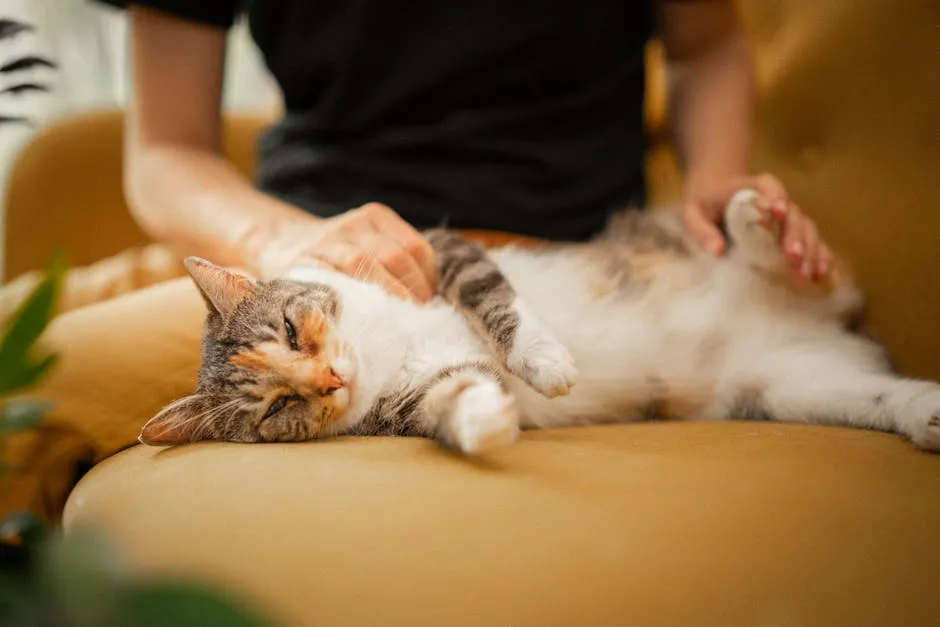
Emotional and Physical Benefits of Kneading
Kneading is more than just an adorable quirk; it serves essential emotional and physical purposes for cats. For many felines, kneading acts as a form of emotional release. It’s a comforting action that helps them express affection towards their human companions. When a cat kneads, they’re often in a state of bliss, releasing positive energy that can create a calming effect. It’s like a mini spa day for their emotional well-being!
Physically, kneading offers several benefits as well. The rhythmic motion helps stretch their muscles, keeping them limber and agile—essential for those spontaneous zoomies! Additionally, by activating the scent glands in their paws, cats mark their territory, signaling to others that this space belongs to them. This natural behavior can also be seen as a way for cats to create a cozy environment before settling down for a nap.
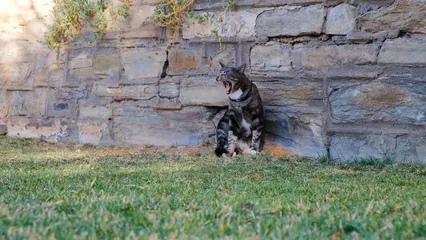
Kneading as Communication
Kneading is not just a quirky cat behavior; it’s a form of communication. When your feline friend kneads, they are expressing their feelings in a language only they understand—or perhaps one that we’re slowly beginning to decode. This rhythmic motion, often accompanied by purring, signifies a cat’s feelings of safety and affection.
Think about it: your cat kneads your lap like a baker preparing dough. It’s their way of saying, “I trust you. You make me feel comfy!” This behavior harkens back to kittenhood, when they kneaded their mothers for milk. As adults, cats retain this instinctual behavior, which links them to a sense of security and warmth. So, when your cat kneads, it’s a throwback to those cozy days of nursing and bonding.
But kneading goes beyond just affection. It can also serve as a means of marking territory. Cats possess scent glands in their paws. When they knead, they leave their unique scent on whatever surface they are kneading. This is a subtle way of saying, “This place (or person) belongs to me!” So, if your cat is kneading you, consider it a compliment—they are claiming you as part of their territory.
Just like humans, cats have different personalities, and their kneading habits can reveal a lot about them. Some cats may knead vigorously, while others are gentler; some might even drool! A cat that kneads passionately might be expressing heightened comfort or happiness. On the other hand, a cat that kneads softly may simply be content and seeking a cozy spot.
Individual differences in kneading behavior can reflect a cat’s personality traits. An outgoing cat may knead more often and in various locations, while a more reserved cat might prefer to knead in private. Observing these nuances can deepen your understanding of your feline companion.
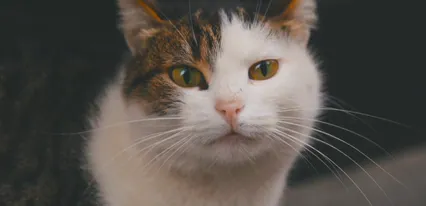
Handling Kneading Behavior
Managing your cat’s kneading can sometimes feel like navigating a minefield of claws and affection. If your cat’s kneading becomes a bit too enthusiastic—think sharp claws digging into your lap—there are ways to handle this behavior without dampening their spirits.
First, consider a soft barrier. Placing a thick blanket or cushion on your lap can help protect your skin from those little toe beans while still allowing your cat to knead. It’s a win-win! Your cat gets to indulge in their favorite pastime, and you get to keep your lap intact.
Another effective strategy is to redirect your cat’s kneading to appropriate items. Encourage them to knead on a designated blanket or pillow. Pheromone sprays can make these items more inviting, signaling to your kitty that this is their special kneading spot.
It’s crucial to remember that kneading is a natural behavior and should never result in punishment. Punishing a cat for kneading can create fear and anxiety, which can damage the bond you’ve built. Instead, foster a positive experience. If kneading becomes uncomfortable, gently guide your cat to a more suitable surface or distract them with a toy or treat.
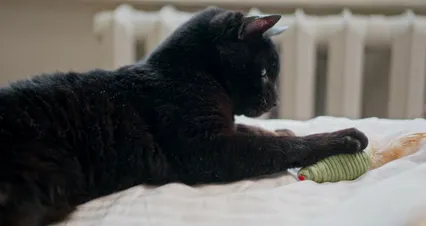
Keeping your cat’s claws trimmed is another helpful tip. Regular grooming can minimize the discomfort of kneading, allowing your cat to express their affection without leaving you with scratch marks.
In conclusion, managing kneading behavior is about balance. Recognizing it as a natural expression of love will help maintain a positive relationship with your furry friend. After all, when your cat kneads, they’re sharing a piece of their heart with you.
Conclusion
In summary, kneading is a charming behavior that cats exhibit, reflecting their comfort and emotional state. This rhythmic pawing, often referred to as “making biscuits,” originates from kittenhood, where it serves as a way to stimulate milk flow and bond with their mothers. As adult cats, they continue this behavior to express affection and security, often kneading on their owners or favorite blankets. Understanding why cats knead can significantly strengthen the bond between them and their humans, creating a deeper sense of connection. As you observe your own feline friend, take a moment to appreciate the nuances of this endearing act. After all, every knead is a little love letter from your cat!
And if you’re looking to elevate your cat’s experience even further, consider a Cat Tree Tower. It provides a perfect playground for climbing, scratching, and, of course, kneading!
FAQs
What does it mean when a cat kneads?
When a cat kneads, it signifies comfort, affection, and security. This behavior is deeply rooted in their early experiences as kittens. Kneading mimics the motion they used to stimulate milk flow from their mothers. This instinctual action evokes feelings of safety and contentment. Cats often knead when they’re happy, which may include moments of relaxation or during snuggles with their favorite humans.
Do all cats knead?
Not all cats knead, but it’s a common behavior among many felines. Individual differences in personality and experience influence whether a cat will knead. Some cats may have stopped kneading due to stress or a lack of positive associations. Others might knead more energetically when feeling particularly affectionate or happy. Observing your cat’s unique habits can help you understand their preferences better.
Can kneading be harmful?
While kneading itself is generally harmless, it can pose some concerns. If your cat kneads with extended claws, it might lead to scratches or discomfort for you. To manage this, keep your cat’s claws trimmed. You can also place a soft barrier, like a blanket, on your lap during kneading sessions. Avoid punishing your cat for kneading, as it’s a natural expression of love and comfort. Instead, redirect their behavior to appropriate items, like a designated blanket or pillow.
Is there a way to stop my cat from kneading?
While you can’t entirely stop your cat from kneading, you can manage the behavior. If their kneading becomes uncomfortable, try providing a specific blanket or pillow for them to knead. Keeping their claws trimmed will minimize any discomfort caused by kneading. If your cat seems overly anxious while kneading, consider seeking advice from a veterinarian or animal behaviorist.
Before you go, don’t forget to check out some great cat-themed products that can add a little fun to your life! How about a Cat-themed Coffee Mug to enjoy your morning brew while your cat kneads beside you!
Please let us know what you think about our content by leaving a comment down below!
Thank you for reading till here 🙂
All images from Pexels




